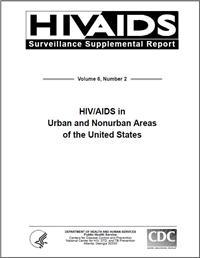This report focuses on the geographic distribution of HIV/AIDS in metropolitan and nonmetropolitan areas of the United States. Over 85% of cumulative adult/adolescent AIDS cases have been reported from large metropolitan statistical areas (MSAs) and approximately 6% from nonmetropolitan areas. In 1999, 82% were reported from large MSAs, and 7% from nonmetropolitan areas. In contrast, 62% of the general adult population of the United States lives in large metropolitan areas, 17% in medium size metropolitan areas, and 20% of the population lives in nonmetropolitan areas. This report includes statistics on AIDS for reported cases in 1999, by the size of the place of residence, racial/ethnic group (White, Black, Hispanic, Asian/Pacific Islander, and American Indian/Alaska Native), risk exposure group (men who have sex with men, injection drug users, heterosexuals, and others), age, and gender. Data are presented either by state or region of the United States to highlight geographic similarities and differences. Although the proportional distribution of persons with HIV and AIDS between metropolitan and nonmetropolitan areas has not changed much over time, national and local HIV/AIDS surveillance systems continue to monitor the epidemic for shifting patterns. Technical notes on the surveillance methodology and data tabulation used for the report are provided.
Format:
Report
Publication Date:
2000
ID:
25258
- General Public
- HIV and AIDS
- Children


